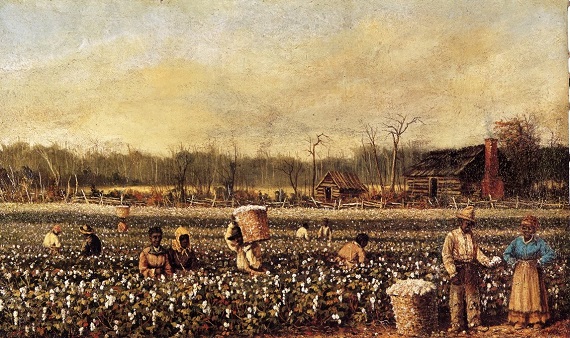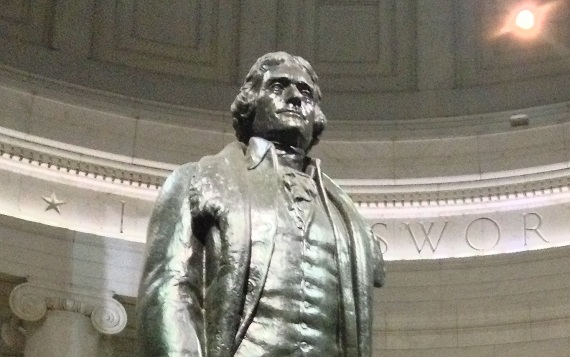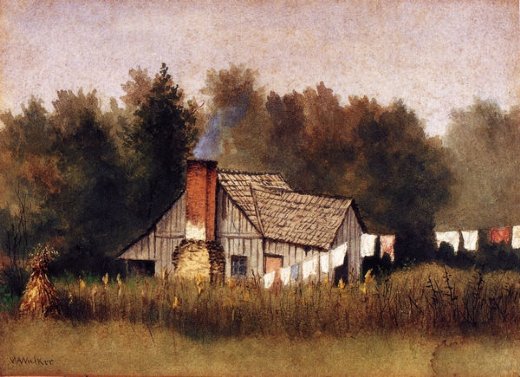
Our culture’s indifference to the past—which easily shades over into hostility and rejection—furnishes the most telling proof of that culture’s bankruptcy. —Christopher Lasch
The purpose of education is to free the student from the tyranny of the present. —Cicero
The authority of those who teach is often an obstacle to those who want to learn. —Cicero
Introduction
The slavery that ended more than a century and a half ago has still today a powerful emotionally-driven presence in American public discourse. Some of those who talk “slavery” use it as a weaponised word. They have no knowledge, understanding, or interest in what life was like in past times for Americans, black or white. Some historical perspective is needed.
Before the invention of labour-saving machinery, beginning in Britain in the later 1700s, the master-servant relationship was normal in almost every human society. Terminology and circumstances might differ in law and custom, but it was primarily a matter of the control and use of labour. Servitude was the everyday condition of great numbers of people who did most of the world’s hard and dirty work.
Servitude is commonplace in the Bible. Forms of slavery flourished in Greece and Rome in their greatest days of cultural excellence. In the Islamic world slavery was everywhere, with blacks from East Africa and whites from Southern and Eastern Europe. Developed Asian civilisations were rife with servitude. For half a millennium many of our European forebears were serfs, tied to a piece of land to be worked for its owner. Until quite recent times a large part of the European populations were servants or dependent peasants with no more real freedom from labour and inferior status than African-American slaves.
Contrary to what most Americans seem to think today, slavery of black people flourished in black Africa for as long as we are able to find record—longer than in any other part of the world. The United Nations reports that it still exists today in some corners. Authoritarian chieftainship and tribal warfare were endemic in Sub-Saharan Africa despite some industrious historians’ fanciful portrayal of advanced civilisations.
None of us, I think, have a claim on current society for what may have happened to our forebears eight or more generations ago.
When the discovery and settlement of the New World began in the 1500s, there was immense demand for labour. Daring and skillful Portuguese sailors had made Europe familiar with black Africa. Labour demand was met by African chiefs from their captives and often from their own people. Slaves were black Africa’s primary product and export. The coastal trading stations were African institutions.
Those who want to blame the U.S. South as the chief or only sinner regarding slavery sometimes quibble over words. For instance, claiming that “servants” in the Bible does not mean “slaves.” But as John Adams pointed out to Thomas Jefferson, “slave” was just a word while the condition of the labouring poor in the North could scarcely be differentiated from that of Southern blacks. Despite the false information conveyed by television, John Adams was never an abolitionist. The abolitionist Wendell Phillips discovered a boy working in a stable in Boston who did not know that he was not a slave.
Nobody knows for sure how many black Africans were transmitted to the New World from the 1600s to the 1800s—perhaps 5 million. For Americans it is quite relevant that less than 5 per cent of this traffic was to British North America. In North America the black population from the beginning increased abundantly, at a rate almost equal to the white, suggesting relatively good conditions. In 1780 the African American population was 566,000. In 1860 it was 4.4 million.
Just before the Revolution slavery was increasing in many of the Northern colonies. Slaves were 10 per cent of the New York population and household slaves were commonplace in affluent Connecticut households, including clergy. Timothy Dwight, president of Yale, wrote a long poem about how much happier the slaves were in Connecticut than elsewhere. Massachusetts had the first legal regulations for slaves. Newport, Rhode Island, was one of the world’s major ports for the international slave trade.
At the end of the Revolution Massachusetts was the only one of the 13 States that had acted officially against bondage. For most of the North emancipation was gradual through the earlier 1800s, leaving plenty of time for masters to move their people to the rich sugar fields of Louisiana and Cuba. There were still a few black slaves in New Jersey on the eve of the War between the States.
Upper South colonists had no need for and wanted to terminate continued importations, but the interest of British traders prevailed in London. Blacks continued to flourish by natural increase in the South. The only fall-off in the black reproduction rate and living standards during American history came in the half-century after emancipation with a 10 per cent drop in health and longevity, as is clear in the vital statistics of 1900.
There is indication that the first Africans imported into Virginia had the customary English status of indentured servants, indentures expiring after a stated number of years. But by the middle of the 1600s the permanent bonding of Africans had been established in the English colonies through law and custom. This was official in 1655 when the free black man Anthony Johnson demanded and received permanent service from black man John Casor in the Northampton County, Virginia, Court. Casor claimed that his indenture had expired and he was free but was overruled in favour of his black master.
In writing the Constitution, a deal between New England slave-trading interests and South Carolina and Georgia provided that the foreign slave trade might remain open until 1808. At the end of that period, the international slave trade was declared illegal by the U.S., with a large majority of Southern support. The British had already proclaimed it banned and began to interdict it with their mastery of the seas. African American population continued a massive natural increase, but newcomers arrived in the U.S. only with smuggling or when residents in new territory like the Louisiana Purchase were confirmed in their property.
While the African population grew exponentially in North America, that was not the case in South America and the Caribbean where the slave population tended to be used up and need constant replenishing. Every maritime European nation engaged in the cross-Atlantic slave trade and had African slaves in its New World colonies. Most African-Americans would not exist today if their ancestors had not come to North America in bondage and enjoyed relatively healthy conditions of living. African-American slavery existed for three centuries because it worked.
Another trick used to make the South the chief villain in the slavery story, is the claim that in the Catholic Latin colonies were better than North America in the treatment of slaves. It is perhaps true that manumission was easier and the colour bar, though present (as it still is) was less evident than in Protestant colonies, but the vital statistics of a need for continuing replacement in the Catholic colonies tell the real story.
The illegal shipping of persons from Africa, now equivalent to piracy, continued for long after 1808. The primary entrepreneurs in this trade were Spanish, Portuguese, and New Englanders, all engaging in the slave traffic from Africa past the middle of the 1800s. It was a dangerous enterprise because Africa was a source of deadly diseases for white men, but it was also extremely profitable. It was the foundation of many Northern fortunes. The endowment of Brown University came from this trade as did funds that bankrolled Daniel Webster’s “nationalist” legal and political career. Northerners continued bringing black slaves to Cuba and Brazil right up to the War for Southern Independence at the same time as abolitionist propaganda flourished in their home country. Some New Englanders owned slaves in Cuba after emancipation in the United States.
The history of this trade provides several interesting incidents. The great Harvard historian Samuel Eliot Morrison relates that the African who led the well-known slave revolt on the ship Amistad, after he was freed in the U.S., returned to Africa, and became a slave trader himself. There were not a lot of other entrepreneurial opportunities available.
Henry A. Wise, subsequently governor of Virginia and a Confederate general, while he was U.S. Charge’ d’Affaires in Brazil in the 1840s, worked hard against the American, i.e., New England, shippers who were bringing fresh slaves into that country, a crime for American citizens.
In 1860 a U.S. Navy vessel near the coast of Cuba intercepted a slave ship, the Echo from Rhode Island. There were 400 Africans on board, in miserable condition, the mortality rate on the voyage having been 30%. The U.S. vessel that captured the slave ship was commanded by John N. Maffitt who a few short years later would be an outstanding Confederate Navy officer. The captain and owner of the Echo was Edward Townsend, a well-educated man from an affluent Providence, Rhode Island family.
Townsend claimed he had saved the Africans from death in their own land, which may well have been true, and he let slip that he expected to make $130,000 from the voyage, a staggering sum in those days. The Southerner Maffitt took the criminal Yankee Townsend to the Northern-born U.S. judge in Key West. That judge refused to take jurisdiction over the Echo for its U.S. and international crime and directed the case to Boston, the supposed point of origin of the voyage. Townsend had “friends” and the Boston judge allowed him to walk free.
Meanwhile, the Echo and its captives were sent to Charleston where they were received sympathetically and provided with food and clothing. I once read an ignorant leftist novel which portrays Charlestonians chortling crudely over having new slaves. But that is not what happened. The U.S. Attorney James Conner, who was later to lose a leg fighting in the Confederate army, was unable to get hold of Townsend who had been sent to Boston to be freed but prosecuted the crew of the slave ship. One “historian” falsely states that the Africans were made slaves in South Carolina. In fact, they were returned to their homeland, though most did not want to go. In Charleston they were treated well and supplied with their needs.
In the late antebellum period, a few Southerners touted the idea of re-opening the slave trade—as a way of irritating the Yankees and affirming the solidity of their society. However, such ideas were overwhelmingly crushed by Southern public opinion and the Confederate Constitution unequivocally banned slave importations.
Many people over generations have believed that entering into Western Civilisation and Christianity, even in a subordinate status, was a net benefit for Africans. Las Casas, the Spanish Bishop of the Indies in the 1500s, preached against the enslavement of Indians but thought that slavery was a benefit for Africans. The Episcopal bishop of Vermont wrote just before the war that never in history had so much been done for the uplift of Africans as by the American South.
If all white Americans were racists in today’s terms, why are historic white Southerners the only people so guilty that their monuments are marked “racist” and destroyed? After all, Southerners lived with African Americans for generations in a relationship that was not entirely negative while they were virtually absent from the rest of the United States.
Not to mention that only in Western civilization, and certainly not in Africa, did emancipation become a moral imperative. Christianity and monogamous marriage were not African institutions.
Westerners believed in white supremacy. Western civilization, the greatest achievement of mankind so far, was white. No other attitude was conceivable in the realities of the time. Non-whites they encountered were either considered savages or of very strange cultures.
People in those days did not feel a drive to “fix” reality, a mode of thinking that only appeared in the West in the 19th century. The only disagreement was over whether the superiority was permanent or could be changed, a subject of speculation by Jefferson. Southerners were guided by everyday experience—abolitionists by abstract theories of right.
White supremacy was not a conspiracy for oppression but simply an everyday taken-for-granted assumption by people of that time. The first U.S. immigration law limited citizenship to white persons. The Great Emancipator, two years before he was elected President, avowed to a great crowd that the races were different and where they had to live together he favoured the dominance of the white race to which he belonged.
Earlier, Lincoln in his eulogy for his hero, the slaveowner Henry Clay, praised Clay’s endorsement of the “moral fitness” of sending the black population back to their African homeland. He approved Clay’s expectation that the return of blacks to Africa bringing civilisation would be “a signal blessing” to Africans.
African slavery in North America was never static. Like most human social institutions, it changed over time. It evolved, generally in an ameliorative direction. It was milder and the bonds were loser in 1860, after frontier conditions had been settled down, than had been the reality in the tough early colonies. Black and white Southerners had lived together for two centuries before the War Between the States and were the only Americans who had grown familiar with each other.
Slavery involved several million people over 10 or so generations and a vast territory, the greater part of what was the antebellum United States. You can find an example of anything you want to find. However, it is proper for our understanding to consider the general life of Southern blacks and whites at a particular time rather than chosen examples.






Thank you Dr. Wilson for this fine piece. It’s sad that even some conservatives have a simplistic view of slavery.
The dog that didn’t bark.
NO ONE was ever enslaved in the New World. All brought their legal status with them from Africa where they had been Negro slaves of Negro owners.
There were precisely ZERO slave insurrections during the War Between the States…the War Between the Northern States and the Southern States…but not the War Between “Free” and Slave States because there were Slave States in the “Free” belt…how awkward. Still, there were ZERO SLAVE INSURRECTIONS IN 4 YEARS OF TOTAL WAR WHERE MILLIONS OF WEAPONS WERE SCATTERED ABOUT ON SOUTHERN BATTLEFIELDS…AND THE MOSTLY WHITE MEN WERE AWAY AT WAR…zero. So now you know how poorly the slaves were treated…or as BT Washington stated, “slaves would have laid down their lives to protect the (mostly) white women and children left to their care”.
TRUTH MATTERS.
atta boy!!
Truer words have never been spoken
It is unfortunate that most Americans, should they read Dr. Wilson’s wonderful essay, are too poorly educated and lacking in any facility for the English language to understand what he is saying. Otherwise, they would gain a new perspective on The War and slavery in America and greatly benefit from his erudition.
Some time ago, I read from a primary source, a newspaper of the time prior to the Civil War, that economics had a great deal to do with the conflict between the North and the South. Accordingly, most of the imports came into Southern ports and were then shipped North. The North having the larger representation in Congress imposed tariff taxes upon these imports, 80% of which the Southern States had to pay. This was a long standing conflict and the Southern States had finally come to the position of secession based upon unfair and discriminatory economic practices imposed upon the South.